Last updated on
Discover the simple and effective steps to clean your kitchen chair cushions, keeping them fresh and spotless for a comfortable dining experience.
Kitchen chair cushions are a great way to add comfort and style to your dining area. However, they can quickly become dirty and stained with regular use.
If you’re wondering how to clean kitchen chair cushions, you’ve come to the right place! In this article, we’ll provide you with some easy-to-follow tips and tricks for keeping your cushions looking fresh and new. Whether you’re dealing with spills, stains, or just everyday dirt and grime, we’ve got you covered.
So let’s get started!
What's Inside
Identify Cushion Material
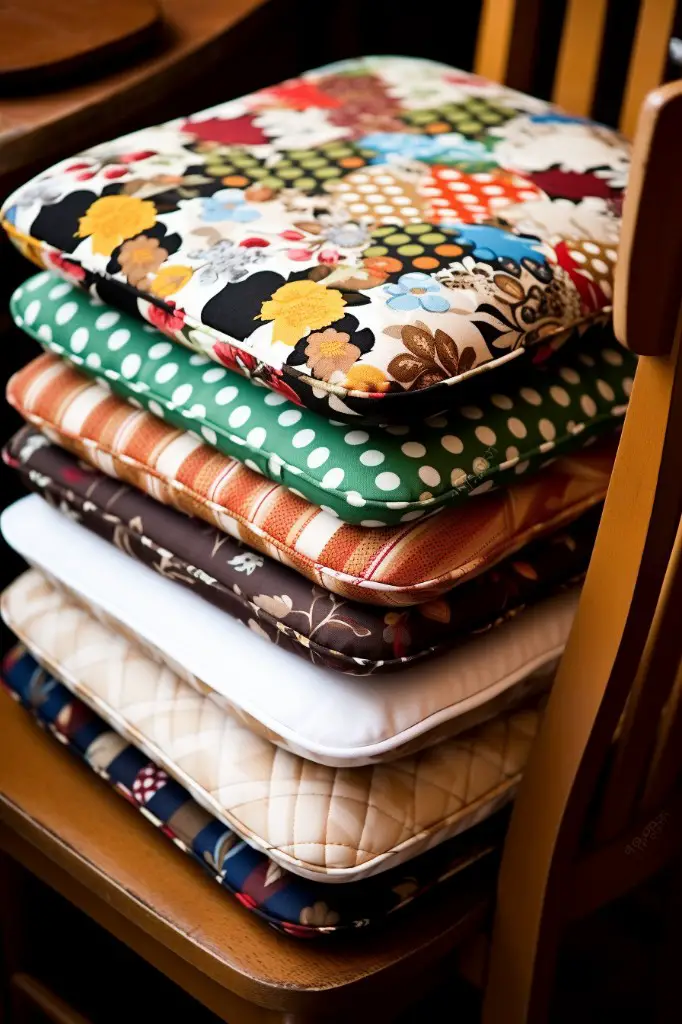
This will help you determine the best cleaning method and avoid any damage to the cushion fabric. Most kitchen chair cushions are made of either fabric, leather, vinyl or a combination of these materials.
To identify your cushion material, start by checking for tags or labels that indicate what it’s made from. These tags usually provide care instructions and may also include information about stain resistance or other special features.
If there are no tags on your cushions, try examining them closely for texture and color variations that can give you clues about their composition. For example, leather feels smooth and has a distinct smell while vinyl has a shiny surface with visible seams.
Read Manufacturer’s Tags
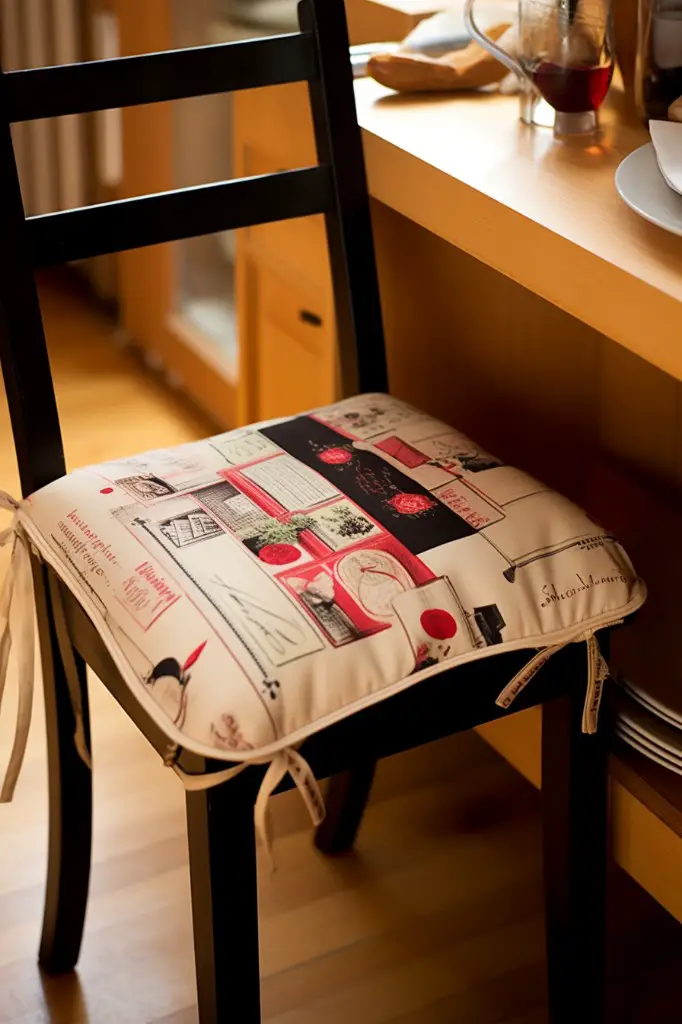
These tags provide valuable information on how to properly care for your cushions without damaging them. The tag may include instructions such as whether or not the cushion cover is removable and machine washable, what type of detergent should be used, and if bleach or other harsh chemicals should be avoided.
Some manufacturers even provide specific cleaning codes that indicate which methods are safe for their products.
It’s essential to follow these guidelines carefully because failure to do so can result in damage or discoloration of your cushions. If there is no tag present on your cushion, try contacting the manufacturer directly for advice on how best to clean it.
Vacuum Excess Dirt
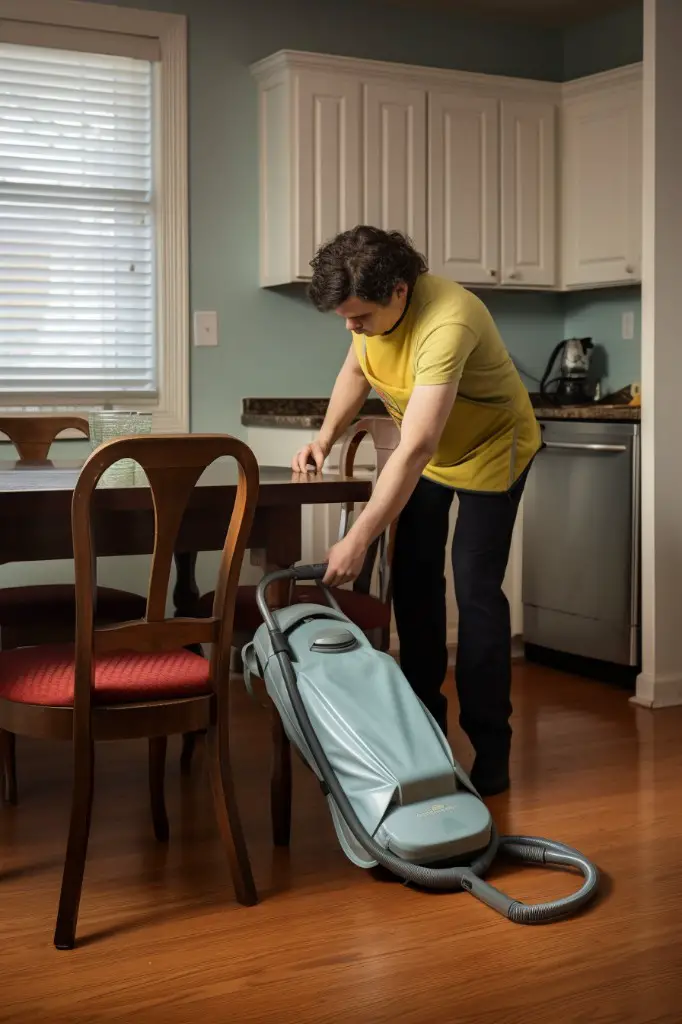
The first step is to vacuum any excess dirt or debris from the surface of the cushion. This will help remove loose particles that can cause further damage if left unattended.
Using a handheld vacuum with a soft brush attachment, gently run over each cushion in circular motions. Be sure to pay extra attention to crevices and seams where dirt tends to accumulate.
If your cushions are particularly dirty or stained, consider using an upholstery cleaner before vacuuming for best results. However, always read manufacturer instructions before applying any cleaning solution on your cushions as some materials may not be compatible with certain cleaners.
Spot Cleaning Stains
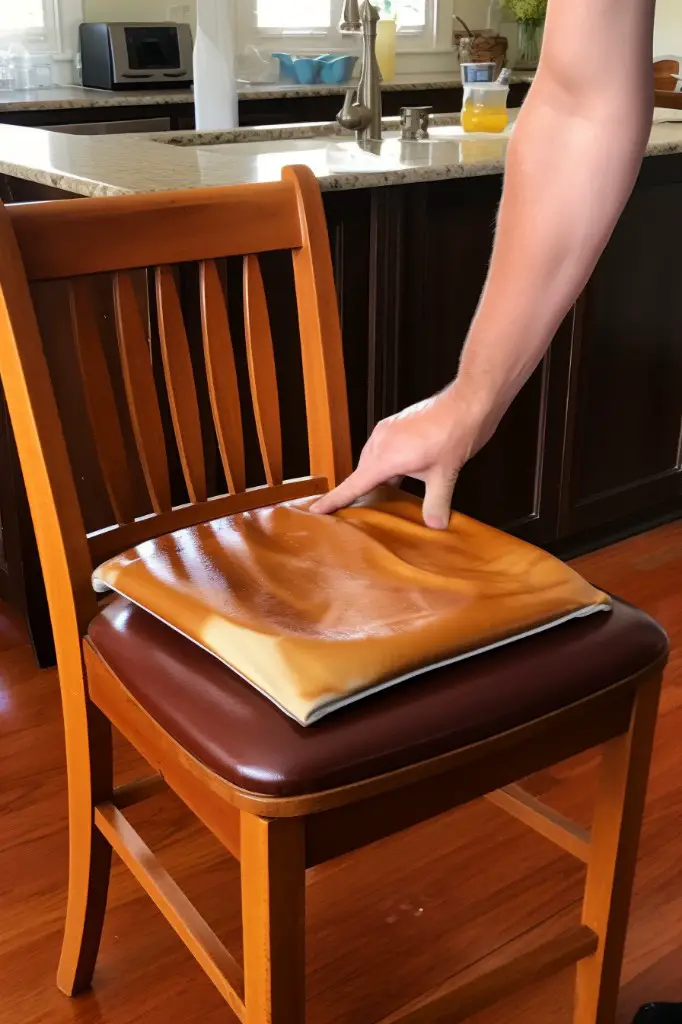
The longer you wait, the harder it will be to remove the stain. For spot cleaning stains, start by blotting up any excess liquid with a clean cloth or paper towel.
Avoid rubbing the stain as this can spread it further.
Next, mix a solution of mild detergent and warm water in a bowl. Dip another clean cloth into the solution and wring out any excess water until damp but not dripping wet.
Gently dab at the stained area with your damp cloth until you see some improvement in removing or lightening of stains from food spills like ketchup or coffee spills that may have occurred during mealtime.
For tougher stains such as ink marks or grease spots use an appropriate cleaner recommended for that type of fabric material after testing on an inconspicuous area first before applying directly onto cushions surface.
Cleaning Fabric Cushions
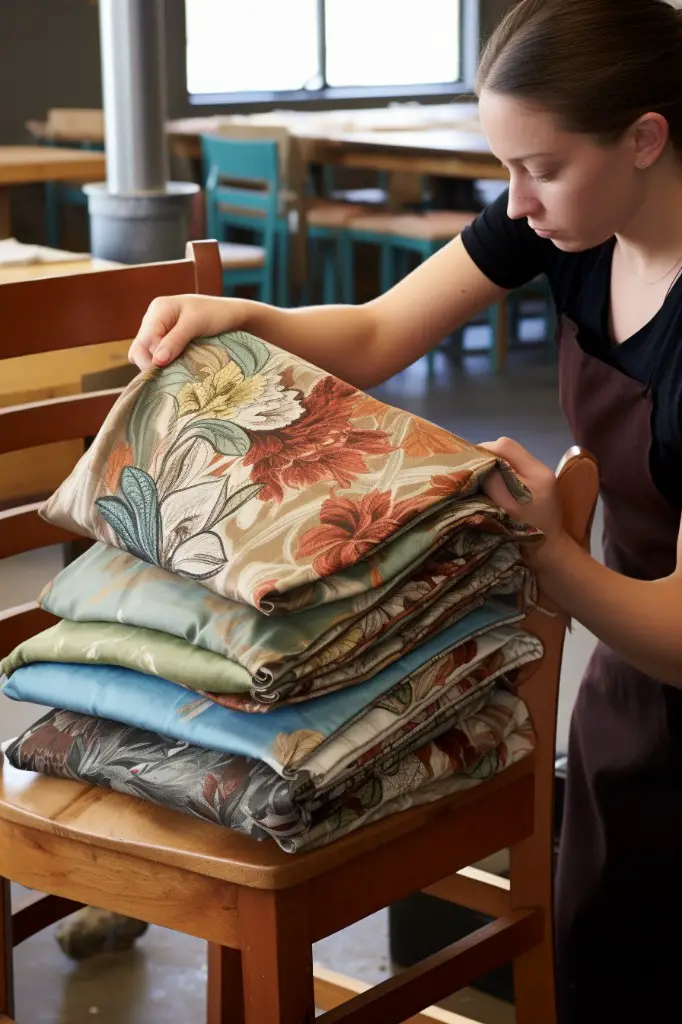
They can easily become stained with food spills or dirt over time. To clean fabric cushions, start by removing any loose debris or crumbs with a vacuum cleaner.
Then, spot-clean any stains using a mixture of mild detergent and warm water. Be sure to test the solution on an inconspicuous area first before applying it to the entire cushion.
For tougher stains like wine or coffee spills, you may need to use an upholstery cleaner specifically designed for fabric materials. Follow the manufacturer’s instructions carefully and avoid saturating the cushion with too much moisture as this can lead to mold growth.
Once you’ve finished cleaning your fabric cushions, allow them ample time to air dry completely before reassembling them onto your kitchen chairs again.
Cleaning Leather Cushions
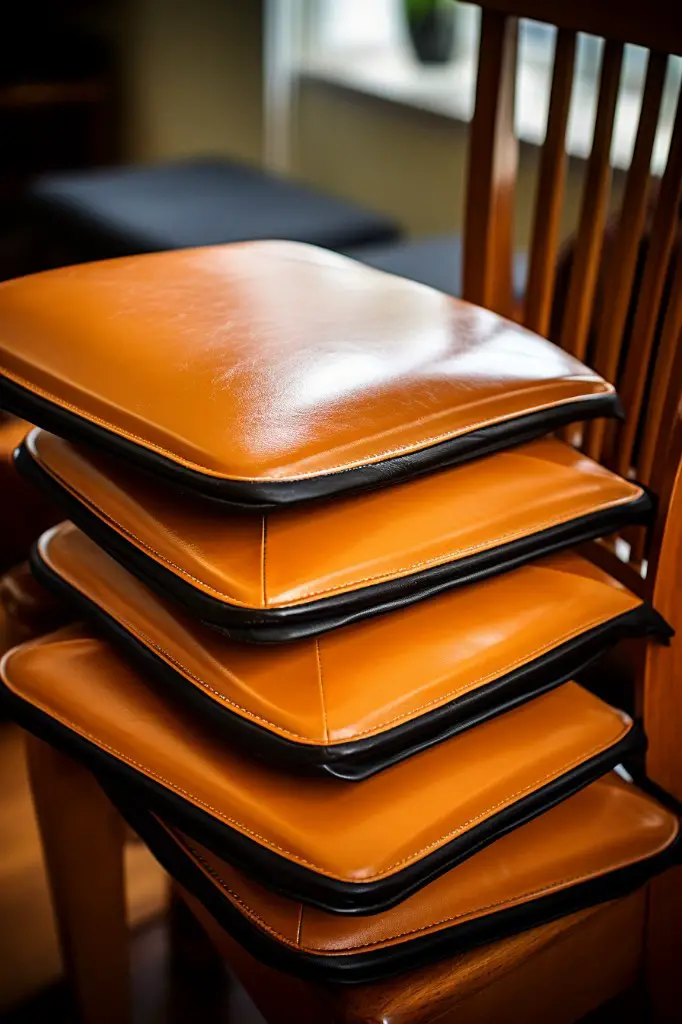
Start by wiping the surface with a dry cloth or vacuuming it gently to remove any loose dirt or debris. Then, mix a solution of mild soap and water in a bowl and dip a soft cloth into it.
Wring out the excess water so that the cloth is damp but not soaking wet.
Next, use the damp cloth to wipe down each cushion thoroughly, being careful not to saturate the leather with too much moisture. If there are any stubborn stains on your cushions that won’t come off with soap and water alone, try using an alcohol-based cleaner specifically designed for leather surfaces.
Once you’ve finished cleaning your leather cushions, be sure to let them air-dry completely before using them again. Avoid exposing them directly to sunlight or heat sources like radiators as this can cause cracking or fading over time.
Cleaning Vinyl Cushions
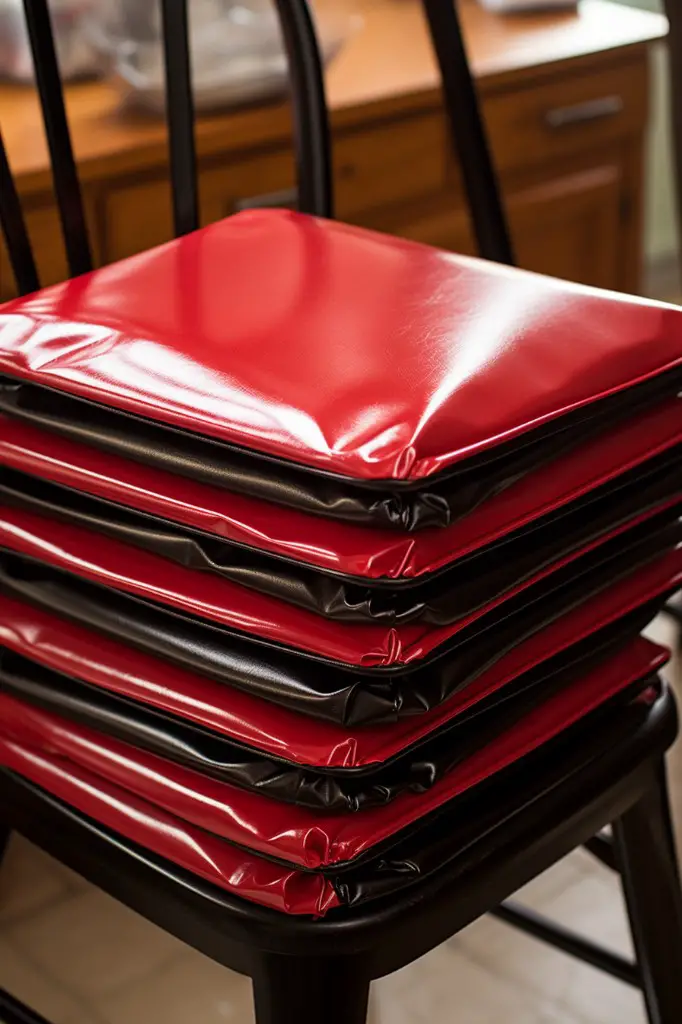
To clean vinyl cushions, start by wiping them down with a damp cloth to remove any loose dirt or debris. Next, mix a solution of warm water and mild dish soap in a bucket.
Dip the cloth into the solution and wring it out well before gently scrubbing the cushion surface.
Be careful not to use too much water as this can damage the cushion’s foam padding underneath. Rinse off any soap residue with another damp cloth, then dry thoroughly using a clean towel or allow them air-dry completely before reassembling your chair.
Avoid using harsh chemicals such as bleach or ammonia on vinyl cushions as they can cause discoloration and damage over time.
Cleaning Outdoor Cushions
To clean outdoor cushions effectively, start by removing any loose dirt or debris with a stiff brush or vacuum cleaner. Then mix a solution of warm water and mild detergent in a bucket.
Dip a soft-bristled brush into the solution and gently scrub the cushion’s surface.
Be sure to rinse thoroughly with clean water afterward to remove all soap residue from your outdoor cushion. If you have stubborn stains on your outdoor cushion that won’t come out with regular cleaning methods, try using an oxygen-based bleach product specifically designed for use on fabrics.
Once you’ve finished cleaning your outdoor cushion(s), allow them to air dry completely before putting them back in place on your patio furniture. Avoid exposing wet cushions directly under sunlight as it may cause discoloration or fading of colors over time.
Drying Cushions Properly
The best way to do this is by laying the cushions flat on a clean surface in a well-ventilated area. Avoid hanging them up or placing them in direct sunlight as this can cause discoloration and damage the fabric.
If you’re short on time, you can use a fan or hairdryer set on low heat to speed up the drying process. However, be sure not to hold it too close as high heat can shrink or melt certain cushion materials.
It’s also essential that your cushions are completely dry before reassembling them onto your chairs; otherwise, they may develop an unpleasant odor over time.
Reassembling Cushions
This is a simple process that requires some patience and attention to detail. First, make sure the cushion covers are completely dry before putting them back on the foam inserts.
If you removed any ties or fasteners during cleaning, be sure to reattach them in their original positions.
Next, carefully insert the foam cushion into its cover and smooth out any wrinkles or bumps. Make sure all corners of the cushion are fully inserted into their respective corners of the cover.
If your cushions have ties or straps that attach them to your chairs’ frames, be sure they’re securely fastened before sitting down for a meal.
Regular Maintenance Tips
This will help prevent dirt and stains from building up over time, making cleaning easier in the long run. Here are some tips for maintaining your cushions:
1. Wipe down the surface of the cushion with a damp cloth after each use to remove any spills or crumbs.
2. Rotate your cushions regularly so that they wear evenly.
3. Avoid placing sharp objects on or near the cushions as this can cause tears and scratches.
4. Keep pets off of chairs with fabric or vinyl seats as their claws can damage them easily.
Preventing Stains
Here are some tips to help keep your cushions looking clean and fresh:
1. Use placemats or tablecloths: Placemats or tablecloths can protect your cushions from spills during meals.
2. Avoid eating messy foods on the chairs: Foods like spaghetti sauce, chocolate syrup, and red wine are notorious for causing stubborn stains that may be difficult to remove.
3. Clean up spills immediately: If something does spill on a cushion, it’s important to clean it up as soon as possible before it has a chance to set in.
4. Keep pets off the furniture: Pets can leave behind hair and dirt that may stain fabrics over time.
Safe Storage Ideas
Here are some safe storage ideas that will help keep your cushions in good condition:
- Store the cushions in a dry and cool place away from direct sunlight.
- Avoid storing them in plastic bags as this can trap moisture and cause mold growth.
- Use breathable fabric covers or old pillowcases to protect the cushion surface from dust and dirt.
- Stack the cushions flat on top of each other instead of standing them upright, which can cause deformation over time.
FAQ
What can I use to clean my kitchen chair cushions?
You can clean your kitchen chair cushions by spot cleaning stains with a mixture of vinegar, water, and mild soap in cold or lukewarm water.
What is the best way to clean fabric dining room chairs?
The best way to clean fabric dining room chairs is to gently dab the stain with a cloth dampened with rubbing alcohol, then blot the area with cold water mixed with liquid detergent, and finally dry and dab again with cold water before blotting it dry.
What types of cleaners are safe to use on various types of kitchen chair cushion materials?
Safe cleaners for kitchen chair cushion materials include mild detergent on fabric, a mild soap solution on leather, and a mixture of water and mild dishwashing liquid for vinyl.
How often should I clean my kitchen chair cushions to maintain their appearance and hygiene?
To maintain appearance and hygiene, clean your kitchen chair cushions at least once every three months.
Are there any specific techniques to remove stubborn stains from kitchen chair cushions?
To remove stubborn stains from kitchen chair cushions, apply a mixture of dish soap, white vinegar, and water on the stain, then blot with a clean cloth.




